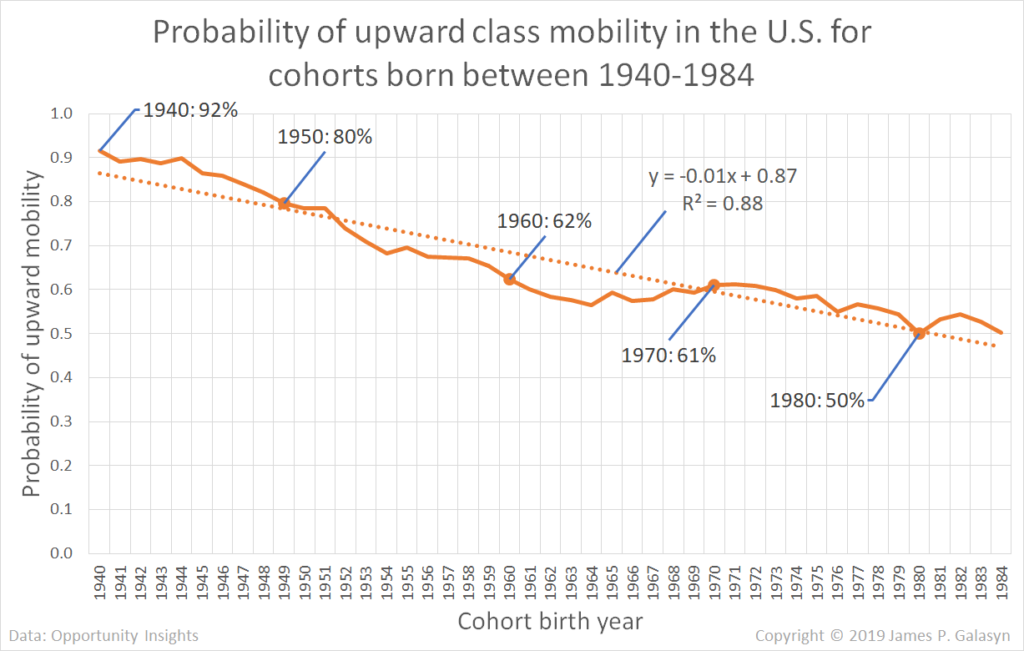Graph of the Day: Class Mobility in the U.S. for Children Born Between 1940 and 1984

2 May 2019 (Desdemona Despair) – Everybody knows the “American Dream” of upward class mobility is a shining artifact of the past, to borrow the words of Leonard Cohen. But how fast is the dream dying?
Harvard University’s Opportunity Insights project seeks to answer this question and hopes to prescribe remedies. They’ve collected a great deal of data about social mobility and a variety of other outcomes, from life expectancy to patent rates by neighborhood, college, parental income level, and racial background.
This graph reports the probability that a child earns more than their parents at age 30 for each child birth cohort in the range, 1940-1984. All estimates are conditional on positive parent income.
Since 1970, the chance that a child in the U.S. will earn more than their parents has declined by about one percent per year. Extrapolating the trend shows that by 2050, the probability declines to about 20 percent, so only one in five children will earn more than their parents.
If you’re looking for reasons for the continuous increase in Americans’ stress, worry, and anger, here’s a good candidate for one of the main drivers.
Baseline Estimates of Absolute Mobility by Parent Income Percentile and Child Birth Cohort